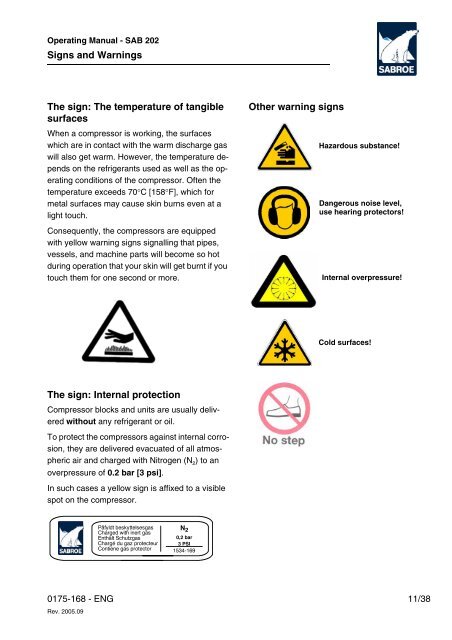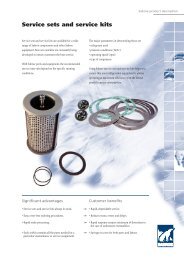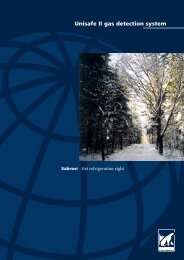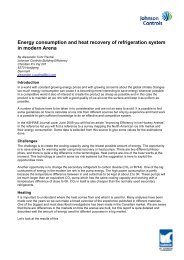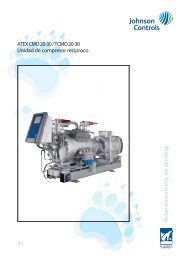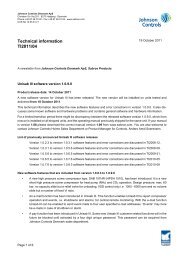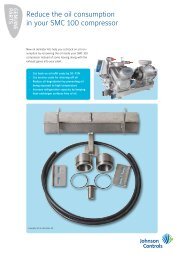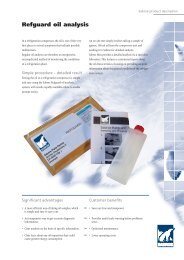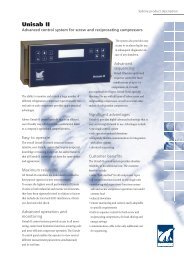Operating manual SAB 202
Operating manual SAB 202
Operating manual SAB 202
Create successful ePaper yourself
Turn your PDF publications into a flip-book with our unique Google optimized e-Paper software.
<strong>Operating</strong> Manual - <strong>SAB</strong> <strong>202</strong><br />
Signs and Warnings<br />
The sign: The temperature of tangible<br />
surfaces<br />
When a compressor is working, the surfaces<br />
which are in contact with the warm discharge gas<br />
will also get warm. However, the temperature depends<br />
on the refrigerants used as well as the operating<br />
conditions of the compressor. Often the<br />
temperature exceeds 70°C [158°F], which for<br />
metal surfaces may cause skin burns even at a<br />
light touch.<br />
Consequently, the compressors are equipped<br />
with yellow warning signs signalling that pipes,<br />
vessels, and machine parts will become so hot<br />
during operation that your skin will get burnt if you<br />
touch them for one second or more.<br />
Other warning signs<br />
Hazardous substance!<br />
Dangerous noise level,<br />
use hearing protectors!<br />
Internal overpressure!<br />
Cold surfaces!<br />
The sign: Internal protection<br />
Compressor blocks and units are usually delivered<br />
without any refrigerant or oil.<br />
To protect the compressors against internal corrosion,<br />
they are delivered evacuated of all atmospheric<br />
air and charged with Nitrogen (N 2 ) to an<br />
overpressure of 0.2 bar [3 psi].<br />
In such cases a yellow sign is affixed to a visible<br />
spot on the compressor.<br />
Påfyldt beskyttelsesgas<br />
Charged with inert gas<br />
Enthält Schutzgas<br />
Chargé du gaz protecteur<br />
Contiene gas protector<br />
N 2<br />
0,2 bar<br />
3 PSI<br />
1534-169<br />
0175-168 - ENG<br />
Rev. 2005.09<br />
11/38


